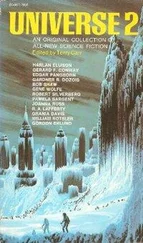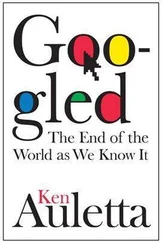A second thunderhead, larger and more globular, is approaching from the north. A breeze springs up. There is no thunder but lightning flickers around inside the cloud like a defective light bulb.
While there is still time, let me tell you what my invention does, just in case worst comes to worst and my article in Brain can’t be published. Since catastrophe may overtake us within the hour, I am dictating these words into a pocket recorder so that survivors poking around the ruins of Howard Johnson’s a hundred years from now will have a chance of avoiding a repetition.
My discovery, like all great scientific breakthroughs, is simplicity itself. The notion came to me during my work with the encephalograph, with which instrument, as you know, one tapes electrodes to the skull and records brain waves, which in turn may reveal such abnormalities as tumors, strokes, fits, and so on.
It happened while I was ill.
One stormy night I lay in a hospital bed recovering from seizures of alternating terror and delight with intervening periods of immense longing. These attacks are followed in my case by periods of extraordinary tranquillity of mind, of heightened perception, clairvoyance, and increased inductive powers. The storm roared and crashed outside the acute ward; I lay on my back in bed, hands at my side, surrounded by thirty-nine other madmen moaning and whimpering like souls in the inner circle of hell. Yet I felt extraordinarily happy. Thoughts flew into my head like little birds. Then it was that my great idea came to me. So confident was I of its value that I leapt out of bed at the height of the storm and yelled at my fellow patients:
“Don’t be afraid, brothers! Don’t cry! Don’t tremble! I have made a discovery that will cure you! Believe me, brothers!”
“We believe you, Doc!” the madmen cried in the crashing thunder, and they did. Madmen, like possessed souls in the Gospels, know when you are telling the truth.
It was my fellow physicians who gave me trouble.
My idea was simply that: if the encephalograph works, why not devise a gadget without wires that will measure the electrical activity of the separate centers of the brain? Hardly a radical idea. But here was the problem: given such a machine, given such readings, could the readings then be correlated with the manifold woes of the Western world, its terrors and rages and murderous impulses? And if so, could the latter be treated by treating the former?
A large order, but so was Edward Jenner’s dream of eradicating the great pox.
A bit of luck came my way. Once I got out of the acute wing, they put me to work as assistant to the resident encephalographer, one of those super-Negroes who speak five languages, quote the sutras, and are wizards in electronics as well. He, Colley Wilkes, got interested in my ideas and helped me rig up my first working model. Another break came my way from Kino Yamaiuchi, a classmate, presently with Osaka Instruments, who cut every piece of red tape and got the first five hundred production models turned out in record time — a little order that cost me $150,000 worth of my wife’s R. J. Reynold’s stock.
My invention unites two principles familiar to any sophomore in high school physics. One is the principle of electrical induction. Any electrical activity creates a magnetic field, which in turn will induce a current in a wire passed through the field. The other is the principle of location by triangulation. Using microcircuitry techniques, Colley and I rigged up two tiny electronic “listeners,” something like the parabolic reflectors with which one can hear a whisper at two hundred feet. Using our double receiver, we could “hear” the electrical activity of a pinhead-sized area anywhere in the brain: in the cortex, the pineal body, the midbrain — anywhere.
So we “listened.” Colley was interested in locating brain tumors and such, but I was after bigger game. We listened and sure enough Colley found his brain tumors. What I found was a horse of a different color.
Colley, I will admit, has not gone along with my idea of measuring and treating the deep perturbations of the soul. Unfortunately, there still persists in the medical profession the quaint superstition that only that which is visible is real. Thus the soul is not real. Uncaused terror cannot exist. Then, friend, how come you are shaking?
No matter, though. Later I was made a professor and didn’t need Colley’s help.
I have called my machine More’s Qualitative Quantitative Ontological Lapsometer.
A curtain moves in a window of the front wing of the motel, opposite the girls’ rooms. Could it be that some Bantu S.O.B. is still trying to shoot me?
Allow me to cite, in simplified terms, a couple of my early case histories.
Patient #1
One hot summer afternoon as I sat at my father’s old coroner’s desk by the open back door sipping Early Times, watching the flight patterns of the martins, and pondering the singularity of being forty-four years old, my nurse, whom I mainly employ to keep patients away, brought in a patient.
Nothing changes in a man, I was thinking. I felt exactly as I felt when I was ten years old. Only accidentals change. Hair begins to sprout from your ears, your toes rotate, showing more skin.
My nurse first put away the bottle. She is a beautiful though dour Georgia Presbyterian of the strict observance named Ellen Oglethorpe. Her eyes, blue as Lake Geneva, glittered in triumph as she stowed the Early Times and closed the door behind the patient. For she had, to her way of thinking, killed two birds with one stone. She was striking a blow at my drinking and at the same time delivering one of the “better sort” of patients, the sort who have money. She approves of money on religious grounds.
The patient was P.T. Bledsoe, president of Brown-Betterbag Paper Company. The poor man had his usual blinding sick headache. I gave him a shot of corticaine and sat and looked at him.
P.T. Bledsoe is a sixty-year-old man, an upright citizen, a generous Knothead, good hunting companion, churchgoer, deacon, devoted husband and father, Lion, Kiwanian, 33rd-degree Mason who, however, is subject to seizures of rage and blinding headaches and is convinced of several conspiracies against him. The Negroes for one, he told me, were giving him a hard time at the plant, wanting to be promoted and all. He was certain that the Negroes and Communists were after him (as a matter of fact, the Negroes were after him, I happened to know) as well as a Jewish organization that he called the “Bildebergers” and that he had reason to believe had taken over the Federal Reserve system. Though he lived on the ninth hole squarely in the middle of Paradise Estates, which is protected by an electrified ten-foot fence, a guard house at every entrance, and a private patrol, he kept two fierce Rhodesian ridgebacks, one outside and one inside the house. His ambition was to move to Australia. He never tired of telling of the year in his youth he spent in the Outback.
“Look, P.T.,” I said at last. “Why don’t you move to Australia?”
“Yeah,” said P.T. sourly, disappointed at what he took to be a conversational gambit.
“No, I mean it.”
“I’m not ready to retire.”
“Doesn’t your company have a million acres in Queensland?”
“I’m not walking away from anything.”
I sighed. Perhaps he was right. It’s just that in recent months I’ve found it an effective rule of therapy to accept as more self-evident every day a certain state of affairs, namely, that most people nowadays are possessed, harboring as they do all manner of demonic hatred and terrors and lusts and envies, that principalities and powers are nearly everywhere victorious, and that therefore a doctor’s first duty to his patient is to help him find breathing room and so keep him from going crazy. If P.T. can’t stand blacks and Bildebergers, my experience is that there is not enough time to get him over it even if I could. Nor can I cast out his demon nor forgive his sin if that’s what it is. Why not then move to the Outback, if that is what you like and especially if there is not a Jew or a black for a hundred miles around?
Читать дальше










